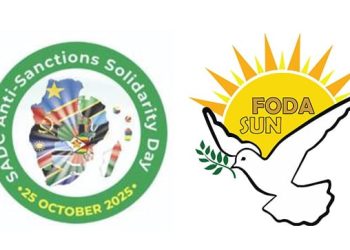Introduction
Marriage, as a legal relationship that entails a multitude of responsibilities and duties for a couple, should be entered into based on their mutual affection. Therefore, the marriage must be entered into freely and without any obstacles in this regard. Forced marriage is a form of marriage in which at least one member of the couple lacks adequate consent or volition. However, prearranged marriages that do not disregard consent are not included.[1] “The phenomenon of forced marriage has been widely defined by experts as a complex crime, encompassing various layers of violation. Such offenses may involve rape, sexual slavery, coerced pregnancy, and forced labour”.[2] International regulations and standards emphasize marriage being freely chosen, and forced marriage is considered a violation of human rights.[3] Also, considering the conditions and restrictions in the Rome Statute of the International Criminal Court, forced marriage may be constituted as a crime against humanity or war crimes.[4]
Forced marriage, regarded as a form of contemporary slavery, is a global issue that demands the implementation of comprehensive measures by states. It is crucial for authorities to enact both effective executive measures and legislation in order to address the multifaceted aspects of this problem. The present text addresses this issue in Iran.
Objective Situation of Forced Marriage Phenomenon in Iran
It is difficult to provide exact statistics on forced marriage in Iran. Additionally, forced marriage is a complex issue with various instances. However, it can be asserted that most cases in Iran are primarily rooted in cultural traditions rather than systematic coercion imposed by the government. Numerous marriage customs among Iranian ethnic groups contribute to discussions on forced marriage. For example, the practice of marrying cousins was common in the past but has declined in recent times. Certain ethnic groups in the country have unique customs and traditions, some of which may seem unusual. One such practice involves uniting a daughter from the family of a murderer with a son from the family of the victim, as a way to reconcile the two clans through the payment of blood money.[5] However, it is important to note that these traditions do not hold legal legitimacy in Iran and have not been officially recognized. Iranian regulations and laws prohibit any form of coercion and deprivation of freedom in marriage, intending to protect individuals from such practices. Furthermore, due to the cultural and social progress made in Iranian society in recent decades, some old traditions have lost their significance, although there may still be manifestations of them within certain ethnic groups.
Approach of Islamic Foundations
The law of Iran is based on Islamic foundations and principles, as affirmed in Principle 4 of the Constitution of the Islamic Republic of Iran. Therefore, it is important to discuss Islamic doctrines in relation to this topic. Islamic foundations dictate a special condition for marriage, which includes the consent of all parties involved. Additionally, it is necessary to voluntarily enter into marriage following the fatwas issued by the mujtahids, especially the Supreme Leader of Iran. Any marriage that is coerced or forced is considered null and void.[6]
Approach of Civil Code of Iran
According to Article 1041 of the Civil Code of Iran, the minimum age for marriage is 13 for girls and 15 for boys. However, if the custodian of the girl or boy provides consent and the competent court deems it appropriate, it is possible to marry before the specified age. Therefore, in cases where individuals are underage and the matter of their marriage is being discussed, the custodian must present evidence of the necessity of marriage in court. This is because there is a presumption of harm to the child and their deprivation of the freedom to choose a spouse.[7] It is worth noting that Iran is a member of the “Supplementary Convention on the Abolition of Slavery, the Slave Trade, and Institutions and Practices Similar to Slavery,” which establishes 18 as the minimum age for marriage. However, the minimum age for marriage stipulated in Iran’s Civil Code is lower than the age specified in this convention.[8]
Also, Article 1070 of the Civil Code stipulates that the consent of the parties is necessary for a contract. On the other hand, according to Article 20 of the Family Protection Law in Iran, official marriage registration is considered mandatory.
Approach of Iranian Criminal Laws
Season 7 of the Family Protection Law has been allocated to criminal regulations. Based on these regulations, if a man gets married without registering his marriage, he will be sentenced to pecuniary punishment and imprisonment.
Furthermore, in the event that a man enters into a marriage with an underage girl, failing to adhere to the legally mandated minimum age for girls, he shall be condemned to imprisonment for a period ranging from six months to two years. In the unfortunate circumstance that this marriage leads to physical harm, disability, or a lasting illness for the girl, the man shall face both an Islamic compensation and imprisonment spanning between two and five years. In the event that the girl’s injuries or illness result in her untimely death, the man shall be sentenced to imprisonment for a duration ranging from five to ten years, in addition to the required Islamic compensation. These articles also address the sentencing of parents or legal guardians of minors and individuals involved in the aforementioned crimes, if they are found to have directly contributed to the occurrence of said offenses.
There are regulations in Iran regarding the trafficking and kidnapping of individuals for the purpose of forced marriage, sexual slavery, and other similar forms of exploitation. The first article of the law against human trafficking in 2004 specifically identifies these acts and prescribes a prison sentence of two to ten years, as well as pecuniary punishment. It is worth noting that if the victims are under 18 years old, the perpetrator will be subject to the maximum penalty.
In cases where human trafficking for the purpose of forced marriage and sexual slavery is widespread and contributes significantly to the proliferation of corruption, it is possible for the perpetrator to be considered as the Mufsid fi al-Ard (In English: corrupter on the earth). Punishment for Mufsid fi al-Ard is capital punishment, according to Article 286 of the Iranian Criminal Code.
Recommendations
1- Iran should continue to strengthen executive and legislative mechanisms for individuals who are coerced into forced marriage by their families.
2- Iran should continue its efforts to prevent short-circuit in relation with minimum age for marriage.
3- Iran should take measures to strengthen training and awareness capacities regarding the phenomenon of forced marriage and its manifold forms.
4- Iran should maintain its commitment to assisting abused and neglected children and teenagers who face the distressing realities of sexual violence and forced marriage. To strengthen this support, Iran should develop comprehensive initiatives that emphasize practical implementation rather than relying solely on legislative measures.
[1]. Mohammad Bagher Moghaddasi and Zahra Ameri, “Forced Marriage; From prohibition to criminalization”, Criminal Law Doctrines (Razavi University of Islamic Sciences), No.12, (January 2016), 170. (In Persian)
[2]. Ahmadreza Tohidi and Azadeh Dadashi, “International Criminal Tribunal Approach to Forced Marriage as Sexual Violence”, Journal of Legal Research, no.39, (November 2019), 9. (In Persian)
[3]. Universal Declaration of Human Rights 1948, Art.16; International Covenant on Civil and Political Rights 1966, Art.23(3); Supplementary Convention on the Abolition of Slavery, the Slave Trade, and Institutions and Practices Similar to Slavery 1959, Art.2; Convention on Consent to Marriage, Minimum Age for Marriage and Registration of Marriages 1962, Art.1; Convention on the Elimination of All Forms of Discrimination against Women 1979, Art.16.
[4]. Rome Statute of the International Criminal Court 1998, Art.7(b) & (g); Elements of Crimes, Art.7(b) & (g) for Crime against humanity; Rome Statute, Art.8 (b)(xxii) & e(vi) for war crimes.
[5]. Moghaddasi and et al, Op. cit.
[6]. Akram Papi, “Forced Marriages and Legal Solutions to Deal with It”, Studies of Economic Jurisprudence, No.1, (March 2020), 19. (In Persian)
[7]. Nasser Katouzian, Civil Code in the Current Legal Order, (Tehran, Mizan Legal Foundation, 2021), 62ed ed., 687. (In Persian)
[8]. Moghaddasi and et al, Op. cit.





